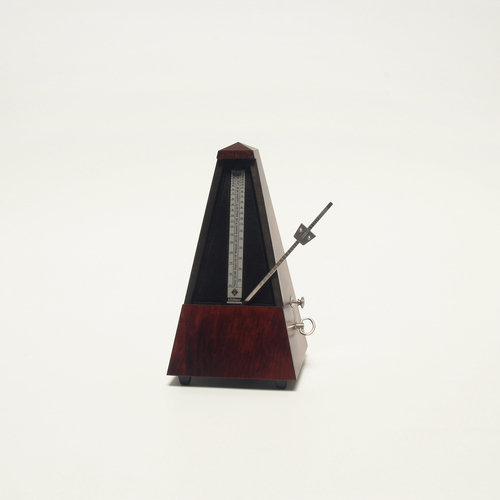Joao Paulo Feliciano
dal 27/2/2008 al 28/3/2008
Segnalato da
27/2/2008
Joao Paulo Feliciano
Cristina Guerra Contemporary Art, Lisboa
Music lessons. The title of the exhibition derives, at a first glance, from a series of photographs framed side by side with original documents. The principle of the music exercise, is taken beyond its literal practice and turn into a conceptual and witty comment on culture as an uninterrupted chain of knowledge that passes from one generation to the next.

Cristina Guerra Contemporary Art is pleased to present MUSIC LESSONS (Lições de Música), a selection of hitherto unseen works by Lisbon-based artist João Paulo Feliciano.
The title of the exhibition derives, at a first glance, from a series of photographs framed side by side with “original documents” (magazine covers, book pages or record sleeves). The principle of the “music exercise”, where an example is formulated by the teacher for the student to follow and emulate, is taken beyond its literal practice and turn into a conceptual and witty comment on culture as an uninterrupted chain of knowledge that passes from one generation to the next. The exhibition as a whole encapsulates not only João Paulo Feliciano’s sense of humour and use of dadaesque mischief, but his questioning of certain romantic ideals.
João Paulo Feliciano (Caldas da Rainha, 1963) began working as an artist in the mid 1980s.
After a relatively short tenure as an abstract painter and a short but decisive period in Brussels where he began to incorporate recycled and found materials, Feliciano moved on to a more conceptual attitude towards his artistic practice. Soon after, his work was invigorated by the explosive force and sheer intensity of rock music, which he embraced in the 1990s with the band Tina & the Top Ten and the experimental and electronic adventure he shared with Rafael Toral, No Noise Reduction. It was at this point that references and elements of music in general and rock in particular began to permeate his work and fuel his already restless
attitude. Rather than commit to categories and disciplines, Felicano has since chosen to push boundaries with his experimental frame of mind and adoption of outright playful procedures that introduce chance, indeterminacy and unpredictability to a body of work that has proven itself to be idiosyncratic and discontinuous.
With this body of new works, Feliciano critically focuses on process more than product. This is not by chance, nor does it derive from any strategic option towards the development of his work, it is rather the result of a truly personal experience: over the past two years approximately, Feliciano has submitted himself to the lengthy trials and tribulations of training according to the conventional regime and practice of classical music, based on theory, eartraining, solfeggio, sight-reading, hand control, posture, discipline, repetition and emulation.
All that he avoided as a child growing up but takes on as an adult with a straight face and determination. To undermine the Romantic ideal, the fetischized artist, Feliciano not only surrenders to the ups and downs of being a student, but additionally takes on the role of trickster, copycat and appropriator, reminding us that the way to become a master, inventor or creator always starts as a mimicking process. We all learn by imitation.
For instance in the work From Right to Left: Playing the Rhodes Electric Piano and the Farfisa Organ. Feliciano takes the cover of Bill Evans’ From Left to Right: Playing the Fender-Rhodes Electric Piano and the Steinway Piano and recreates the cover photo with a sleight difference, that is, he not only uses his own instruments (shifting away from Evans’), but reverses the Left-Right set-up resulting in a face-to-face composition of “student” and “master”.
In Conducting Patterns, an open-ended suite of pencil drawings on paper, Feliciano takes the graphical patterns from a book on conducting techniques and enlarges them to life-size. Afterwards, Feliciano himself practices the beating of bars and measures in front of the sheets of paper, not holding a conductor’s baton but a pencil. The resulting drawings register all of his gestures, with the uncertainties, hesitations, failures and achievements inherent to the process of learning music.
In another piece, the video Mimic Gimmick, Feliciano plays air guitar to the improvisations of legend avant-garde guitarist Derek Bailey. Here, the artist could not be more literal about the process of mimicking, exploring the absurdist aspect of mimicking what, by it’s very nature, cannot be mimicked.
Through this heightening of theatrics, viewers are presented with caricatures and doubles of the Romantic ideal of the artist, someone who evolves into a solitary, suffering genius with an explosive temperament and an unwavering intensity. Feliciano’s copies have the added effect of bringing renewed attention to the patina and intrinsic qualities of the originals he has chosen to emulate. Through these works, João Paulo Feliciano produces deferral. He places himself in the absurd position of the novice but does this to remind us that music is a social event where authors (and listeners) past and present meet. This too can be extended to the work of art which becomes a kind of arena where art-world but also everyday references coalesce and are opened to interrogation.
Opening: February 28th at 10 p.m.
Cristina Guerra Contemporary Art
Rua Santo Antonio a Estrela, 33 - Lisbona
Free admission



